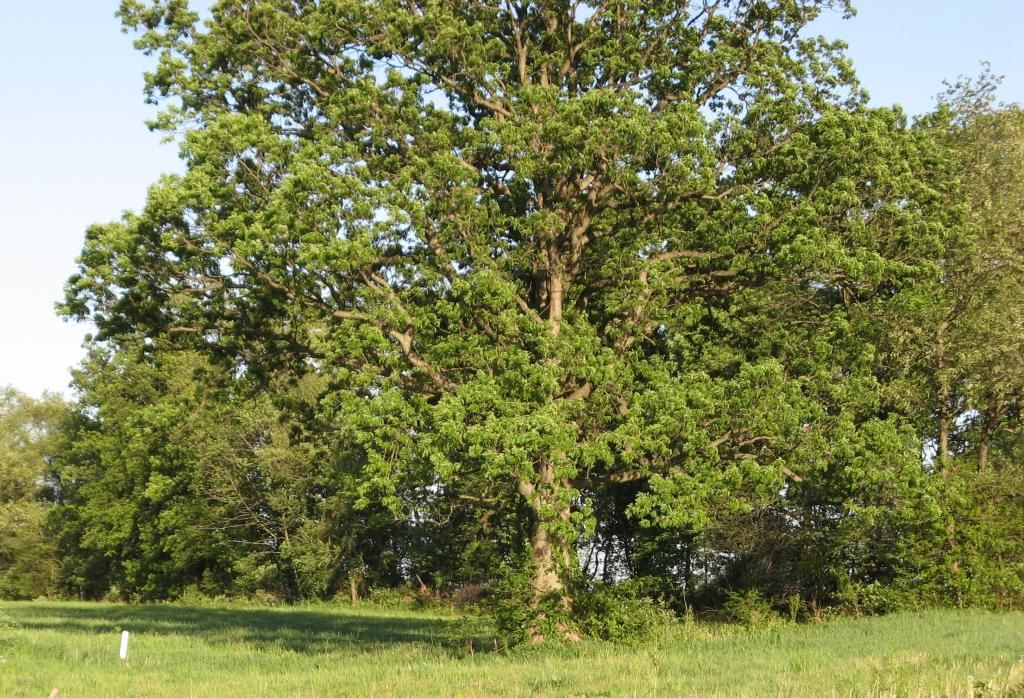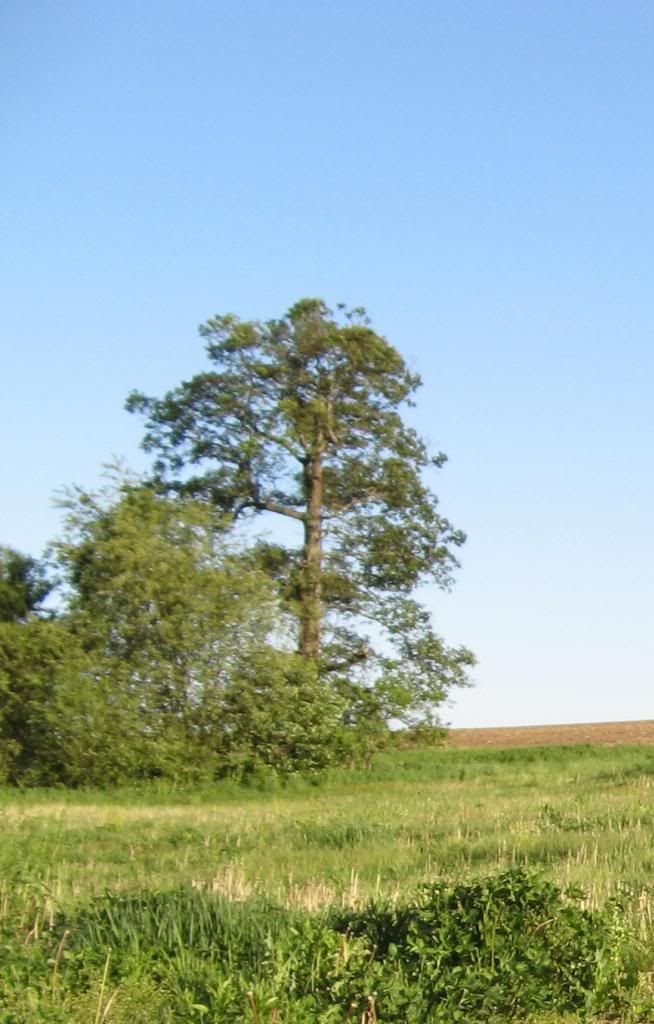steved
ArboristSite Guru
Alright, I have a giant Red Oak that is on the property line. Its probably five feet across the butt, probably 10 feet before it branches, a picture-perfect tree. Picture of it I dug up from about four years ago:

I noticed a couple weeks ago its dropping branches, just the last 12-inches or so with a gob of leaves. Didn't think much of it, until I was reading that thread on Oak Wilt. Now I'm wondering. While I can see some caterpillar damage (probably Gypsy Moth), the leaves seem to be curling. Its lost some bigger branches that were obviously die back probably normal for lower branches, but this is the first year I remember it dropping these gobs of leaves and branches. There is probably ten to twenty of these gobs of branches on the ground between mowings. As you can see, four years ago this one was also being attacked by poison ivy and virginia creeper, but I have since remedied that.
I don't really have the ability to get pictures, the branches are too high and I just mowed the grass (ground up the smaller branches). Sound normal, bad, old age, tree is dying??
I already lost one huge Red Oak about 150 feet up from this one, it wasn't nearly as big or healthy as this one, broke off during one of our huricanes (center was punky). I always assumed it was killed by poison ivy, as it had a poison ivy vine approaching six inches in diameter running up it when I moved here (cut it off). Now I'm wondering if it was poison ivy. Picture of that tree from four years ago:

Thoughts?

I noticed a couple weeks ago its dropping branches, just the last 12-inches or so with a gob of leaves. Didn't think much of it, until I was reading that thread on Oak Wilt. Now I'm wondering. While I can see some caterpillar damage (probably Gypsy Moth), the leaves seem to be curling. Its lost some bigger branches that were obviously die back probably normal for lower branches, but this is the first year I remember it dropping these gobs of leaves and branches. There is probably ten to twenty of these gobs of branches on the ground between mowings. As you can see, four years ago this one was also being attacked by poison ivy and virginia creeper, but I have since remedied that.
I don't really have the ability to get pictures, the branches are too high and I just mowed the grass (ground up the smaller branches). Sound normal, bad, old age, tree is dying??
I already lost one huge Red Oak about 150 feet up from this one, it wasn't nearly as big or healthy as this one, broke off during one of our huricanes (center was punky). I always assumed it was killed by poison ivy, as it had a poison ivy vine approaching six inches in diameter running up it when I moved here (cut it off). Now I'm wondering if it was poison ivy. Picture of that tree from four years ago:

Thoughts?

























































